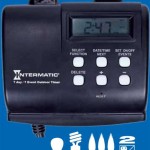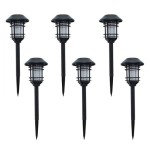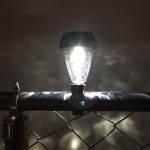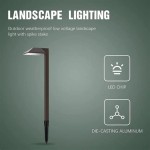Commercial Outdoor LED Signs: A Comprehensive Guide
Commercial outdoor LED signs have become a ubiquitous feature of the modern business landscape. Their bright, dynamic displays offer unparalleled visibility and the ability to communicate effectively with potential customers. Compared to traditional static signs, LED signs provide flexibility, energy efficiency, and long-term cost savings. This article will delve into the various aspects of commercial outdoor LED signs, covering their benefits, types, considerations for purchase, installation, and maintenance.
The Advantages of Utilizing Outdoor LED Signs
The adoption of outdoor LED signs is driven by a multitude of advantages they offer businesses of all sizes. These advantages extend beyond mere aesthetics, impacting key performance indicators such as brand awareness, customer engagement, and ultimately, revenue generation.
One of the most significant benefits is enhanced visibility. LED signs are significantly brighter than traditional signage, making them easily visible during daylight hours and particularly effective at night. This increased visibility is crucial for attracting attention in crowded urban environments or along busy roadways.
Flexibility is another key advantage. LED signs allow businesses to update their messaging in real-time. Promotional offers, event announcements, changes in operating hours, or even simple greetings can be easily programmed and displayed, ensuring that the sign remains relevant and engaging. This dynamic capability contrasts sharply with static signs, which require costly replacements or updates for any changes in information.
Furthermore, LED signs offer environmental and economic benefits. They are considerably more energy-efficient than traditional lighting technologies like incandescent or fluorescent bulbs. This translates into lower electricity bills and a reduced carbon footprint. The long lifespan of LED modules also reduces maintenance costs associated with bulb replacements and repairs.
Finally, the visual appeal of LED signs contributes to brand image. A well-designed and maintained LED sign projects a professional and modern image, enhancing brand credibility and attracting potential customers. The ability to display vibrant graphics and animations further strengthens brand recognition and creates a lasting impression.
Types of Commercial Outdoor LED Signs
The market offers various types of commercial outdoor LED signs, each designed to meet specific business needs and applications. Understanding these different types is crucial for selecting the most appropriate sign for a particular purpose and location.
Monochrome LED Signs: These signs display content in a single color, typically red, green, or amber. They are a cost-effective option for displaying basic text-based information, such as time, temperature, or simple announcements. While limited in color, monochrome signs offer excellent visibility and reliability for straightforward messaging.
Tri-Color LED Signs: These signs utilize red, green, and amber LEDs to create a limited range of colors. They offer more visual appeal than monochrome signs and can be used to display simple graphics and animations. Tri-color signs strike a balance between cost and visual versatility.
Full-Color LED Signs: Also known as RGB LED signs, these displays utilize red, green, and blue LEDs to produce a full spectrum of colors. This allows for the display of high-resolution images, videos, and complex animations. Full-color signs are ideal for businesses that want to create a strong visual impact and showcase a wide range of products or services.
LED Message Boards: These signs are designed primarily for displaying text messages. They often feature scrolling text and adjustable font sizes and styles. LED message boards are commonly used for announcements, promotions, and public service information.
LED Video Walls: Composed of multiple interconnected LED panels, video walls create large-format displays suitable for showcasing high-resolution videos and graphics. They are commonly used in retail environments, entertainment venues, and outdoor advertising.
Electronic Message Centers (EMCs): These are typically larger, pole-mounted displays that are commonly used by schools, municipalities, and businesses along highways. They are designed for visibility at a distance and can display a variety of text and graphics.
The selection of the appropriate LED sign type depends on factors such as budget, desired visual impact, messaging requirements, and viewing distance.
Factors to Consider When Purchasing an Outdoor LED Sign
Investing in a commercial outdoor LED sign requires careful consideration of several factors to ensure that the chosen sign meets the business's specific needs and provides a favorable return on investment. These factors encompass technical specifications, regulatory compliance, and long-term operational considerations.
Resolution and Viewing Distance: The resolution of an LED sign, measured in pixels, determines the clarity and sharpness of the displayed images and text. Higher resolution signs are necessary for close viewing distances, while lower resolution signs may suffice for distant viewing. The viewing distance should be carefully considered when determining the optimal pixel pitch, which is the distance between the pixels. A smaller pixel pitch results in a higher resolution and a sharper image, but also higher cost.
Brightness and Contrast Ratio: The brightness of an LED sign is measured in nits (candelas per square meter). A higher nit rating indicates a brighter sign, which is essential for visibility in direct sunlight. The contrast ratio, which is the difference between the brightest and darkest parts of the display, also affects visibility and image quality. A high contrast ratio ensures that the image remains clear and distinguishable, even in bright ambient light.
Environmental Protection (IP Rating): Outdoor LED signs are exposed to the elements, so it is crucial to choose a sign with an appropriate Ingress Protection (IP) rating. The IP rating indicates the sign's resistance to dust and water. A higher IP rating indicates greater protection. Generally, an IP65 or IP66 rating is recommended for outdoor applications.
Energy Efficiency: LED signs consume electricity, so energy efficiency is an important consideration. Look for signs with high energy efficiency ratings to minimize operating costs and reduce environmental impact. Features like automatic brightness adjustment can further reduce energy consumption by dimming the sign during nighttime hours.
Warranty and Support: A comprehensive warranty and reliable technical support are essential for ensuring the long-term performance of the LED sign. Choose a reputable manufacturer or vendor that offers a multi-year warranty on the sign's components and provides prompt technical assistance in case of any issues.
Permitting and Regulations: Before purchasing an LED sign, it is crucial to check local regulations and obtain any necessary permits. Many municipalities have specific rules regarding sign size, brightness, location, and message content. Failure to comply with these regulations can result in fines or the removal of the sign.
Software and Content Management: The software used to manage the LED sign's content should be user-friendly and feature-rich. It should allow for easy scheduling, editing, and uploading of messages and graphics. Cloud-based content management systems offer the advantage of remote access and control.
Cost Analysis (Total Cost of Ownership): Consider the total cost of ownership, including the initial purchase price, installation costs, operating costs (electricity), maintenance costs, and potential repair costs. A seemingly cheaper sign may end up being more expensive in the long run due to higher energy consumption, frequent repairs, or a shorter lifespan.
By carefully considering these factors, businesses can make an informed decision and choose an outdoor LED sign that meets their specific requirements and provides a positive return on investment.
Professional Installation: Proper installation is critical for the performance and longevity of an LED sign. It is recommended to hire a qualified installer with experience in installing outdoor LED signs. Improper installation can lead to electrical problems, structural instability, and reduced lifespan.
Regular Maintenance: Regular cleaning and inspection are essential for maintaining the appearance and functionality of an LED sign. Clean the sign regularly to remove dust, dirt, and grime. Inspect the sign for any signs of damage, such as loose connections or broken modules.

Led Outdoor Rotatable Linear Sign Light Alcon Lighting 31029

5 Benefits Of Outdoor Led Digital Signs

Led Sign Outdoor Full Color Double Sided Programmable Message Digital

Ip65 Led Display Manufacturers Outdoor Programmable Signs For Exterior Building China Large Wall Made In Com

How To Buy And Manage Program Outdoor Led Signs Wall Manufacturer Doit Vision

P8 Outdoor Led Signs Large Screen For Commercial Building Manufacturers And S China Factory Lights Technology

How To Navigate Permitting For Outdoor Led Signs

Commercial Outdoor Led Sign Light Fixtures Signage Lighting

The Benefits Of Investing In Led Or Digital Outdoor Monitors

Outdoor Waterproof Led Advertising Sign Display China Wall Made In Com
Related Posts







